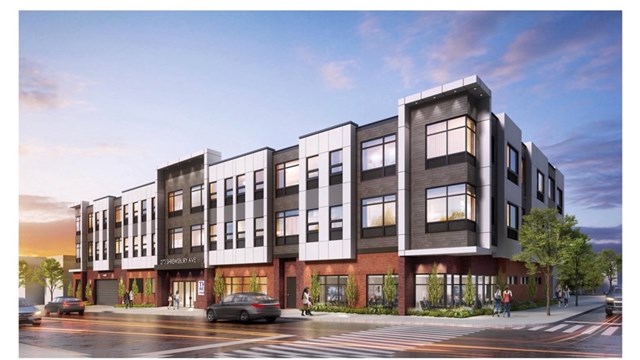
It’s been a long time since cable modems were the gold standard in Internet connectivity—or at least it seems like it’s been a long time. Telecommunications as a field has been developing at a dizzying pace, and multifamily buildings—both new developments and existing properties—face the challenge of providing residents with fast, reliable, Wi-Fi and other telecom-related services.
Like a good restaurant, the telecommunications menu is filled with a variety of choices. What management chooses for the building, or what residents choose for their own units, depends on a variety of factors, including the location of the building, pricing of the packaging, special features, etc.
For example, the Garden State’s menu of service providers consists of several big players. Covering three quarters of the state is Comcast while Cablevision offers a full suite of consumer television, voice and Internet products to more than 4.5 million households in New York, New Jersey and Connecticut. They service 1 million customers in New Jersey. Time Warner Cable services 14 municipalities, including 13 in Bergen County and one in Hudson County. Verizon FiOS (with customers in 12 states) carries TV and broadband subscribers in New York City, northern and Central New Jersey and Connecticut. Other providers in New Jersey are Service Electric Cable, Natural Wireless and DirecTV.
According to Bobby Amirshahi, vice president of communications for Time Warner Cable's New York City operations, "We have a dedicated team serving co-op and condo buildings throughout New York and New Jersey. We provide customized packages of TV, Internet, and phone for buildings with 100 to 150 residential units, and can offer bulk pricing for as few as 25 to 40 units."
In the mid-1990s we installed wire throughout New Jersey and New York," says Michael Stevens, Time Warner Cable's Director of New Market Development. "We cover most of the Manhattan franchise and Western Brooklyn. In New Jersey, we service 14 municipalities; 13 in Bergen County and one in Hudson County. We also service 90 percent of Queens and all of Staten Island. Each building has its own needs. You can pick and choose the services that residents want."
So now that you have the big menu choices, here’s where it gets a little complicated. Each menu choice is broken down into smaller menu choices. Say, for example, you wanted a beef dish—well do you want roast beef, beef stroganoff, steak, etc.? Each company offers something different and now it’s a matter of what you’re looking for. Do you want television, Internet capabilities, telephone or a combination. Some buildings only use one provider while other buildings offer the resident their choice of what provider they want to use.
“In most of our buildings that we currently service, we co-exist with another provider or we stand alone,” says Ben Topor, vice president of multi-dwelling unit sales and retention of Cablevision. “The residents are free to choose with the choices that are out there but the other half of that is that Cablevision offers a bulk rate program. It’s a shared savings approach to a multi-dwelling unit, where we contract with the co-op board and provide a building-wide discount. Residents can upgrade above and beyond that, but we sign a contract for a certain number of years.”
Today, most multifamily communities offer residents TV and Internet through traditional providers. Additional packages that are offered as an amenity will depend based on the individual property owner or manager and arrangements they have with their residential tenants and service provider.
“Verizon FiOS is laser-generated pulses of light delivered over hair-thin strands of fiber-optics that delivers Internet, TV, and phone services across this infrastructure,” says Mike Weston, director of product management for Verizon Enhanced Communities in Basking Ridge, New Jersey. “Residents are able to bundle and customize service offerings for Internet, TV and phone services.”
New Versus Existing Buildings
While it’s easier to add Internet, phone and television service right into the building during the construction phase, retrofitting an older building is a little harder to do.
“New construction developers will embed cabling and infrastructure into its walls as the structure is built but retrofitting a building involves leveraging existing infrastructure (i.e. existing moldings, drop ceilings in hallways) to route and conceal the fiber optic cabling from service stairwells into the resident’s apartment,” says Weston. “Alternatively, flexible molding systems have also been developed to route and blend the fiber cables into wall seams and beneath existing moldings. The entire process of wiring a building typically takes four to six weeks.”
Natural Wireless says the time and effort to add the service in a new construction or as a retrofit is about the same. “In both cases, we need to run vertical CAT5/fiber and hide the Wi-Fi transmitters so all wires and equipment are hidden,” says Dror Schuchman of Natural Wireless in River Vale, New Jersey. “We install our services in some very luxury properties and our installation meets the highest aesthetic requirements.”
The installation of the Natural Wireless network, for example, is typically in the hidden areas of the property and no access to apartments is required. “Since tenants connect via a wireless connection, it is not necessary for “wiring runs” to be placed in each apartment,” says Schuchman. “In most cases, only several wireless radios need to be extended to each floor, minimizing disruptions to tenants during the installation of the wireless system.”
Topor says that Cablevision uses the new construction phase to reach out to new customers. “We start with the ground up and work with the general contractor to figure out the wiring needs,” he says.
Rob Neumann, general counsel and vice president for Access Media3, Inc., writes in an article about a new trend in the telecommunications industry. He says that Minnesota is one of 18 states with a mandatory access law that requires a building owner to grant a right of entry to a service provider that wants to offer their product to residents. In Minnesota, he says, “the cable communications system that installed the equipment must also allow alternative providers to use the equipment if some of the MDU residents choose to subscribe to the services of an alternative provider.” It remains to be seen if this trend will spread to other states.
New Menu of Items
Like any good restaurant, businesses offer new items every now and then for their customers. In the communications world, there seems to be new items or advances almost every day. According to Weston, as both wireless and wired-line technologies advance, consumers will begin to see the convergence of wireless devices within the home.
“For example, Verizon will market a Home Monitoring and Control platform that works with Verizon FiOS,” he says. It’s a combination of devices and online services that let users control and monitor lighting, energy, door locks and web cameras using a computer, tablet, cell phone, or smart-phone.
According to Amirshahi, Time Warner Cable has a similar offering that is available in other parts of the country. “Another new innovation is Time Warner Cable’s IntelligentHome. It’s a home management system where you can remotely control the temperature in your own home, monitor your security cameras, even disable the alarm. It’s a package of services that target the home consumer. You can personalize the settings to your preferences—whether you want to unlock the doors when the kids get home from school, or check in on the family pet via live video.”
Time Warner Cable has not yet announced when this service may become available in the New York City or tri-state area.
The Why of Wi-Fi
Schuchman says that unit owners, shareholders and board members looking to enhance their property need to look at two major trends in the Wi-Fi market. “First, wireless technology has already been integrated into a wide range of home electronics (even TVs have wireless Internet capability built in) increasing the demand for a high quality, managed Wi-Fi network. Second, Smart Wi-Fi architectures allow secured and faster Internet connection for all applications.
Additionally, Schuchman says that residents demand high-tech amenities such as building-wide wireless Internet access. “Shareholders and board members are interested in setting their properties apart with a building-wide Wi-Fi technological amenity as a unique selling proposition to their residents,” he says.
Another new amenity might look a little familiar with those who stay in hotels and have tuned into hotel channels. “We offer 1 or 2 channels to use as an information upload channel,” says Topor. “There’s one way communication that can also be used as a live camera feed. There is a dedicated channel to see who’s coming and going through the building.”
Cablevision says they are also spending $300 million to create an outdoor Wi-Fi network. “We extended it so that it can also be used in some building lobbies,” says Topor. “We don’t go into apartments, but park settings, courtyards, outdoor pool areas, we’ll bring it out there. Summer time you can have shareholders, experiencing outside Wi-Fi. It’s almost hotel style.”
Telecom firms are also pooling their resources to reach more people with more services. "We are working to deploy Wi-Fi hotspots in some of the parks around the city in the four boroughs we serve over the next 12 to 18 months,” says Amirshahi. "After we activate each hotspot, Internet customers of Comcast or Cablevision also can sign onto the network at no charge. Conversely, if you are a Time Warner Cable subscriber and you travel on the LIRR, and are going to the beaches in the summertime, for example, you can get free Wi-Fi. You just have to put in your email and your password, and you can connect.” Non customers will get up to three free 10 minute sessions of access per Wi-Fi-enabled device or they can purchase a full day access pass for 99 cents, according to Amirshahi. Cablevision and Comcast both have tested Wi-Fi service at about 120 New Jersey transit stations.
According to Schuchman, the main legal liability/concern that buildings who offer free Wi-Fi in public areas have is the Communications Assistance for Law Enforcement Act (CALEA) compliance.
“This law requires public Wi-Fi providers to monitor and record transactions and have them available for the FBI and other law enforcement agencies,” he says. “An increasing number of buildings are looking for Natural Wireless to provide service on their property that is CALEA-compliant. If a building offers an open hot spot, the building is liable to be held compliant for CALEA. Anyone who provides a service is covered under CALEA for profit or not. The FCC can fine properties $10,000 a day for not being CALEA-compliant.”
So many choices, so many changes happening today and tomorrow. The most important thing to do is to see what your building currently offers you or decide if you want to select from another menu.
Lisa Iannucci is a freelance writer and a frequent contributor to The New Jersey Cooperator.






Comments
Leave a Comment